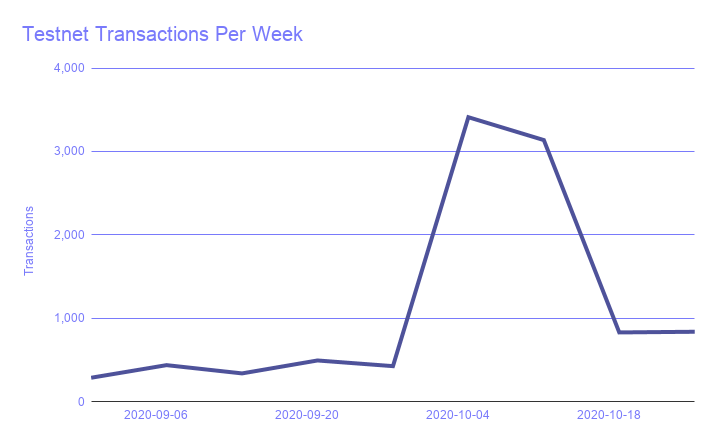
Click here to join Our Network Alerts on Telegram.
This is issue #45 of the on-chain analytics newsletter that reaches nearly 6000 crypto investors every week 📈

This week our contributor analysts cover Ethereum Scaling: xDai, SKALE, and zkSync.
① xDai Chain
Contributor: Andrew Gross, Technical Communications at xDai Chain
Total value locked (TVL) in the xDai chain increased almost 100-fold over the past 3 months from $57,643 USD on August 1, 2020 to $5,642,000 USD on October 22, 2020 (Source). The increase has been driven by several factors including:
High gas fees on Ethereum
Additional tooling, infrastructure, and value offered by projects migrating to xDai
The OmniBridge UI which facilitates user-directed transfers for many ERC20 assets
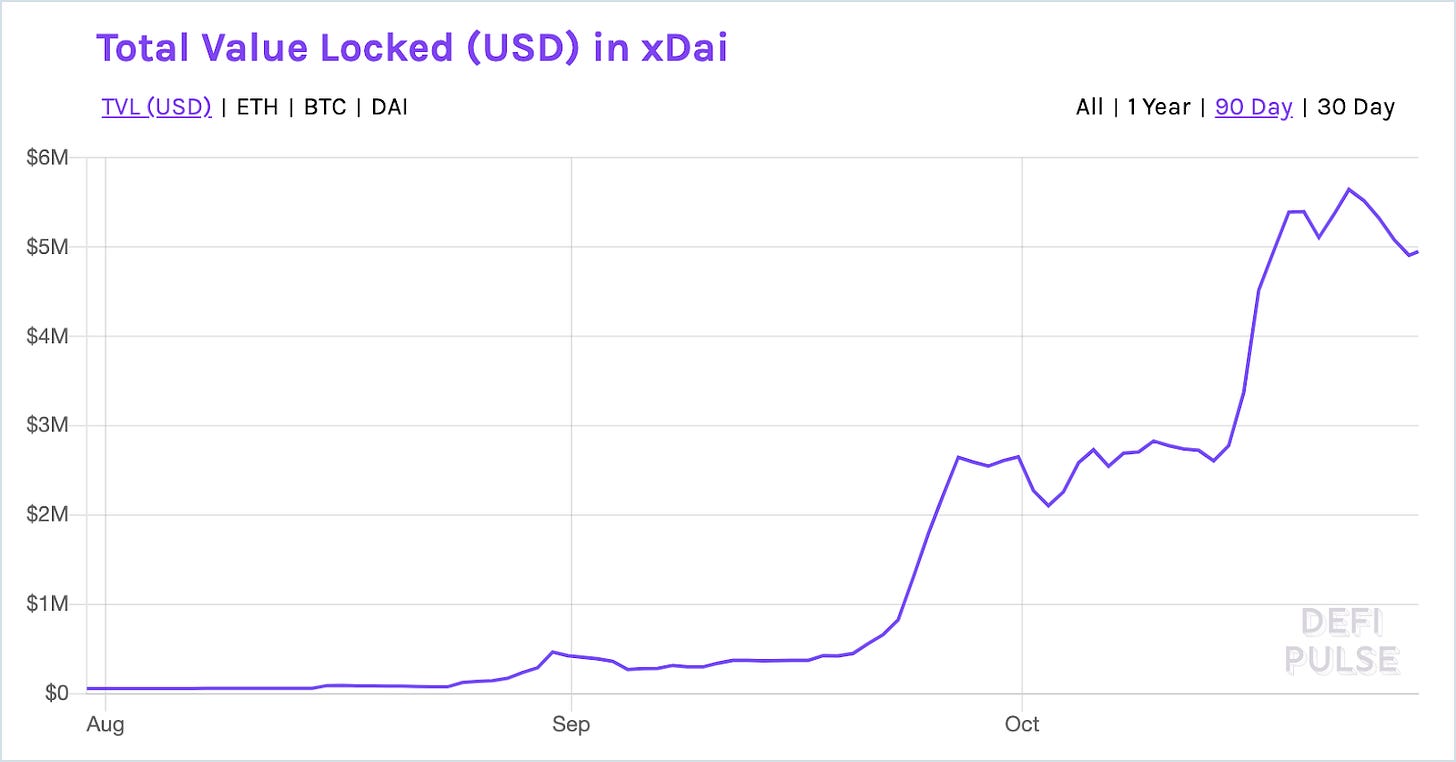
The xDai OmniBridge provides a mechanism where any user can transfer any ERC20 token between Ethereum and the xDai chain in a permissionless fashion. A token does not need to previously exist on xDai to be bridged through the UI; if it does not exist a new token is deployed as a function of the bridging process. As of October 28, 2020, 118 unique ERC20s have been bridged, including large market currencies like USDC, WETH, and LINK as well as many personal tokens, governance tokens and small project tokens. (Source)
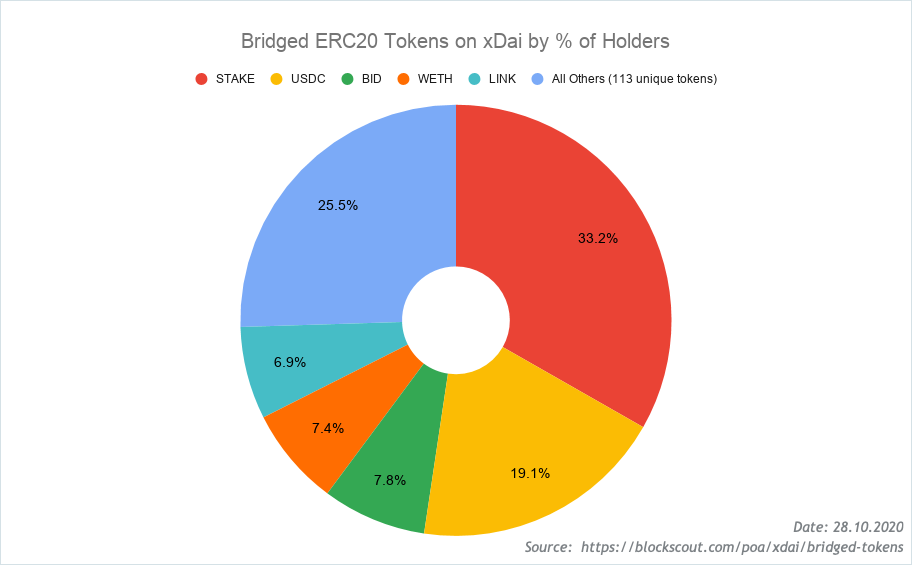
Daily transaction count is a common metric, but a more telling benchmark of chain usage is daily gas consumption. Different types of transactions (txs) incur different gas costs, as simple transfers consume much less gas than complex contract calls. For example, on October 18 there were 64,223 txs on xDai, with a combined gas usage of 12,636,889,295 gas ($12.64 USD equivalent on xDai). The following day, there were 75,252 txs and gas usage was 12,423,232,652. 10,000+ more txs but less gas used overall.
This tells us that on Oct 18 there were more complex contract calls - and the data corresponds to Circles UBI contract activity. Circles UBI launched on October 16; the proxy factory contract has used more than 9.4B gas ($9.40 USD equivalent) since launch. (Note at an ETH price of $400.00, 9.4B gas usage is equal to $3,760.00)
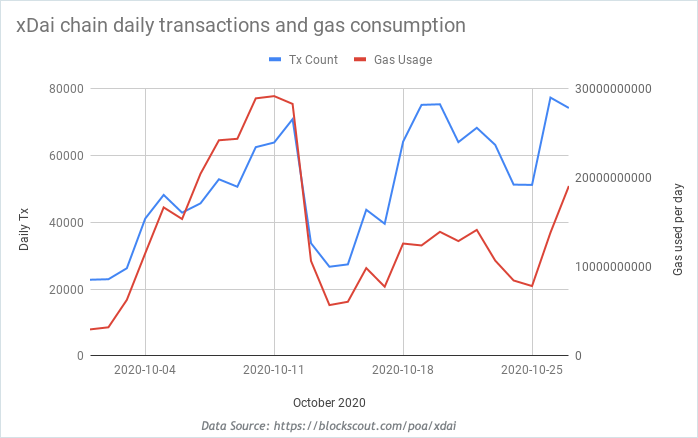
xDai governance processes are maturing to accommodate increased usage. An 11 member governing board now oversees xDai bridge operations on both Ethereum and xDai using a multisig Gnosis Safe for secure signature management. Updates to bridge operations, bridge validators, contract upgrades, or any other changes must be approved by a majority governance decision (Source). The STAKE governance token, an ERC20 with a primary deployment on Ethereum, is used by nominated validators to secure the xDai chain in a Proof of Stake context. This usage will extend to public validators and delegators, further decentralizing the network in the coming months (Source).
Projects continue to migrate and launch on xDai bringing new use-cases to the chain including DeFi applications, DAO Governance, NFT deployment and marketplaces, and many more (Source).
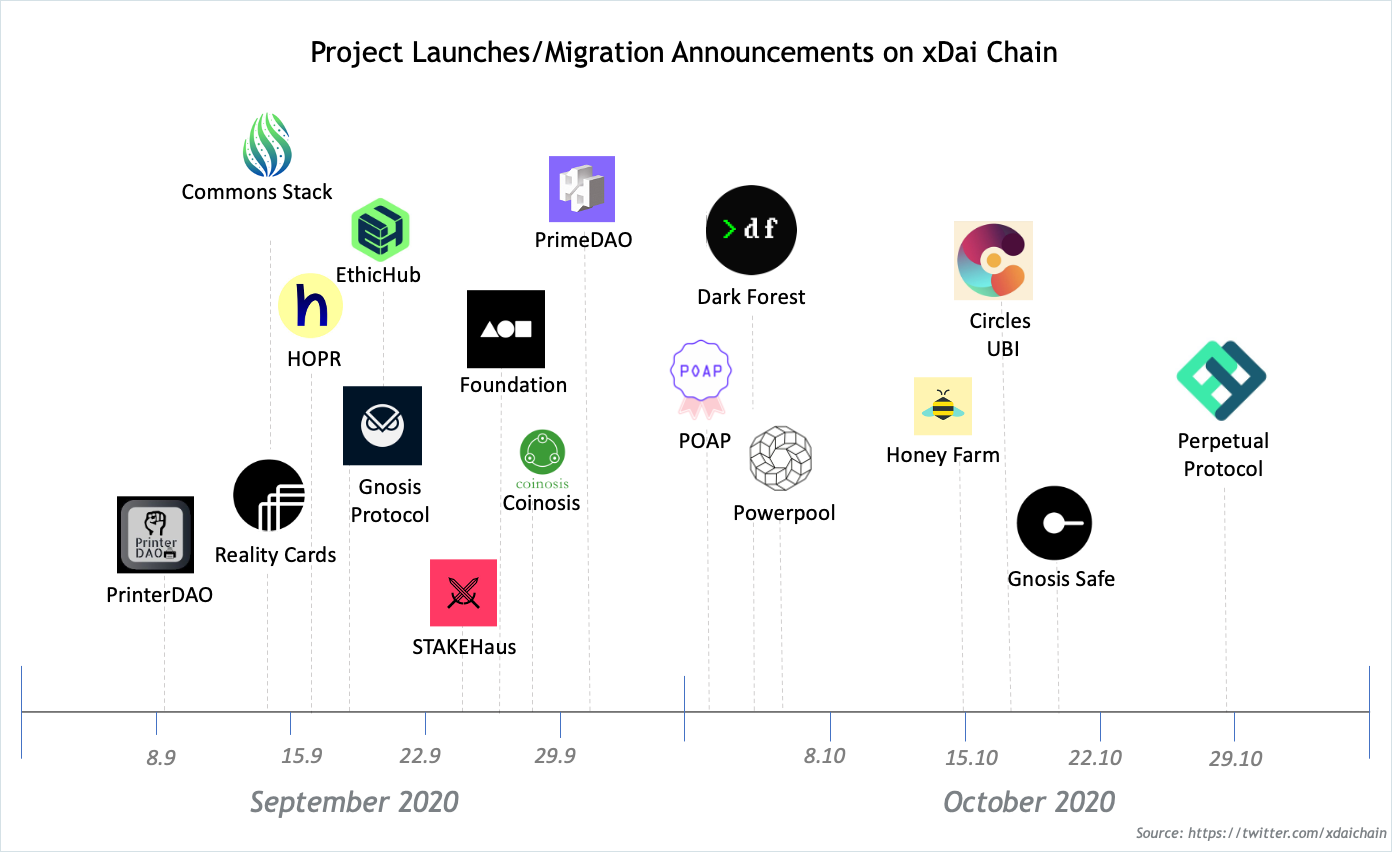
② SKALE
Contributor: Jenia Barkanova, VP of Marketing at SKALE Network
On October 1, the SKALE MainNet Phase 2 launched into a fully decentralized state with over $80M Total Value Locked (TVL), over 3700 delegators from 90 different countries, 46 validator orgs, and 140 nodes; many well-reputed validators such as BlockDaemon, Chorus One, Figment, and others launched and ran nodes in the network. This scope enables the SKALE network to support up to 1,000 decentralized shards or SKALE chains each with sub-second block times, high throughput, and zero gas fees.
SKALE is rooted in the Ethereum Mainnet (EM) from which it is also managed. The entire $80M volume of SKL that is staked in SKALE nodes is held directly on the EM. The set of smart contracts that orchestrate the SKALE Network operates on Ethereum as well. This connection with Ethereum lets SKALE combine Layer 1 security with fully decentralized Layer 2 performance. (SKALE Network dashboard)

The SKALE Network is secured with tokens from a highly distributed group of token holders. At launch, SKALE delegator list includes over 3700 addresses, with network users coming from over 90 countries.
As shown on the chart below, tokens from wallets of various sizes are distributed across the entire validator pool with each validator receiving delegations from small and large token holders effectively democratizing staking and opening the network to wider participation.

SKALE took initial steps towards becoming a highly decentralized network with low concentration of validator power. As of the time of this writing validator power is distributed between 46 validator orgs in total, SKALE is built to run on tens of thousands of nodes and uncapped number of validators. Minimum Stake Requirements will continually halve twice the first year and then annually creating greater decentralization with more unique validator orgs as the network grows.
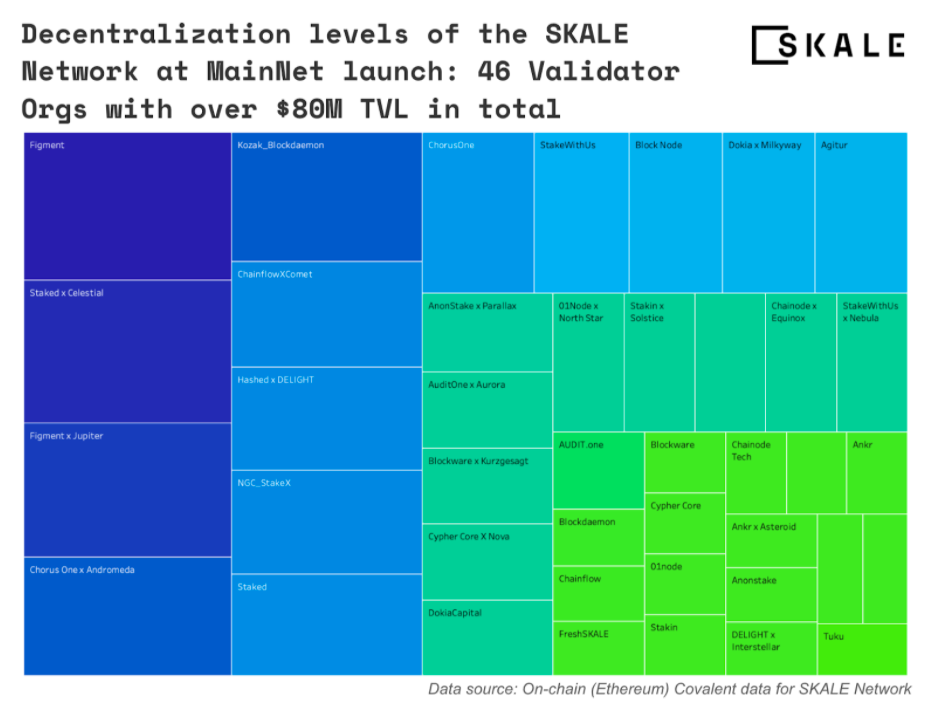
The network has very strong staking participation from the majority of holder addresses. Over 60% of address delegations have been completed in the first two days from when staking was enabled. 95% of token holder addresses have been staked by MainNet launch on October 1st.
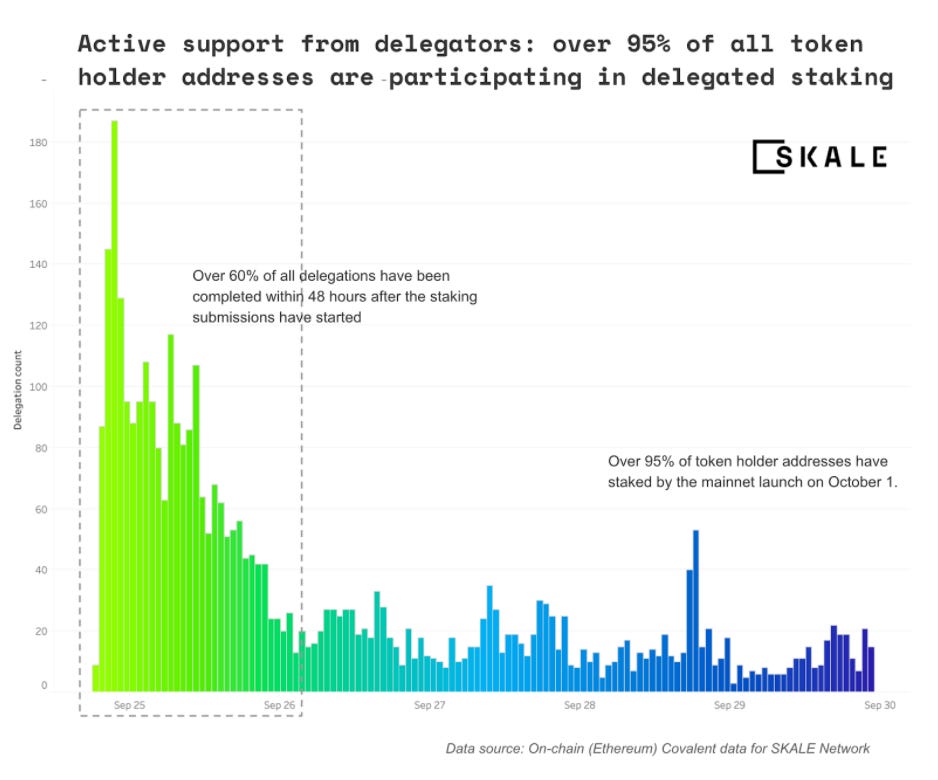
SKALE is now getting ready for the MainNet Phase 3 launch on Dec 1st, which will mean a liquid release of the token. Dapps will commence onboarding over the next few months. At the time of publication, the SKALE Innovator Program includes 60 Dapps from over 10 Dapp categories, including DeFi, Games, Social, and more.
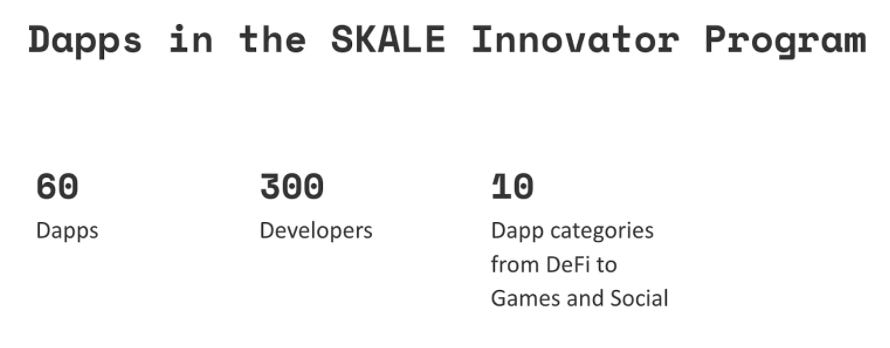
③ zkSync
Contributor: Alex Gluchowski, CEO at Matter Labs
zkSync is a trustless, cryptographically secured protocol to scale smart contracts and payments on Ethereum. Live with payment support since June 2020, zkSync has processed over 300,000 transactions in total. The Gitcoin grants round 7 was one big driver in transaction volume, starting on 15th September and ending on 2nd October. It is worth noting that there are no block rewards or delegations on the current zkSync network yet and therefore all 300,000 transactions represent real interactions between users. Please note that the following chart is log scaled.
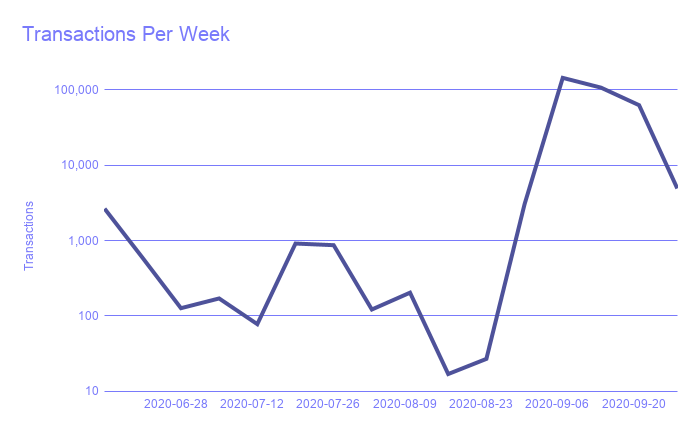
A critical factor to the success of every layer 2 solution is how seamless users can interact with it directly from their wallets. zkSync is usable directly from MetaMask and over 21,000 wallets have so far directly interacted with zkSync.

The total amount of value migrated to zkSync is currently at $ 129,109 USD. This has grown on average by $15,937 per week since the launch in June.
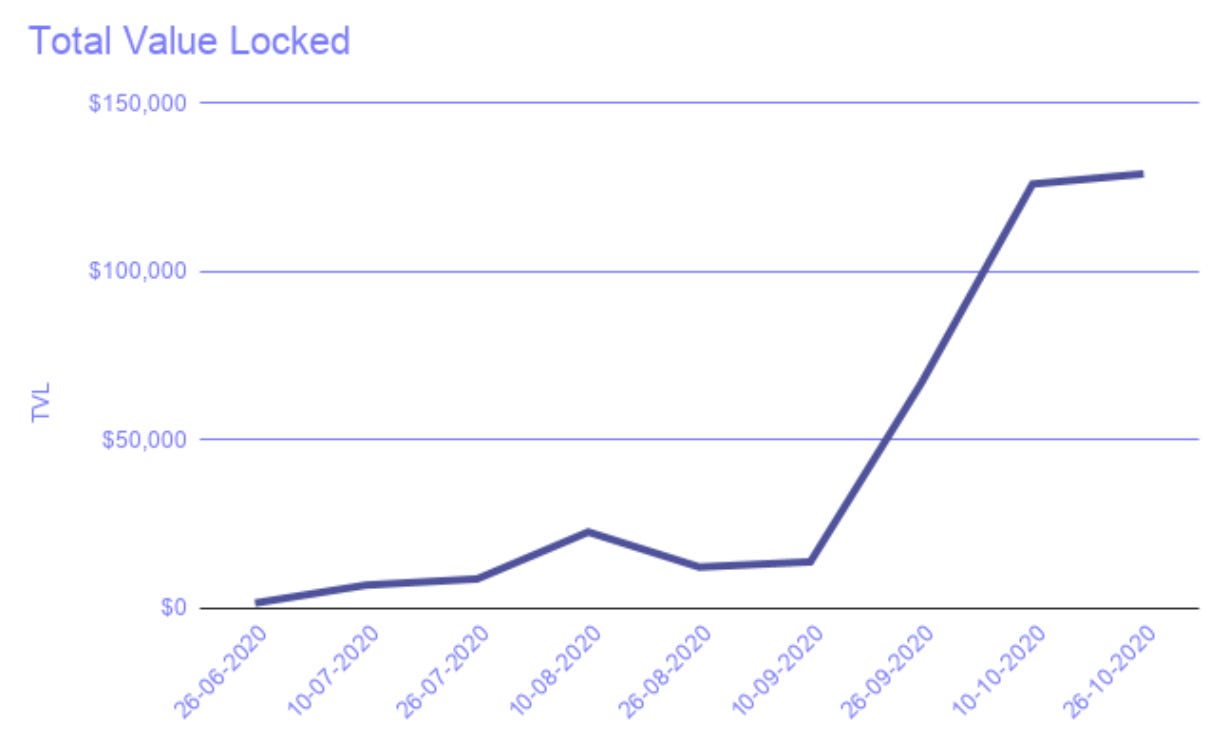
While full smart contract support is not available for mainnet yet, it is already available on the zkSync testnet. Curve has already completed their integration and they have launched a USDT:USDC pool. 1inch’s Mooniswap and Balancer are currently in the process of completing their integrations as well. The transactions on the smart contract testnet just reached over 10,000 cumulative transactions.
